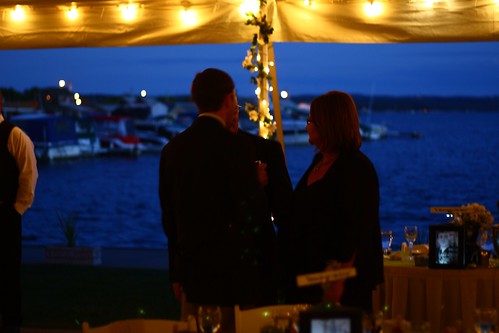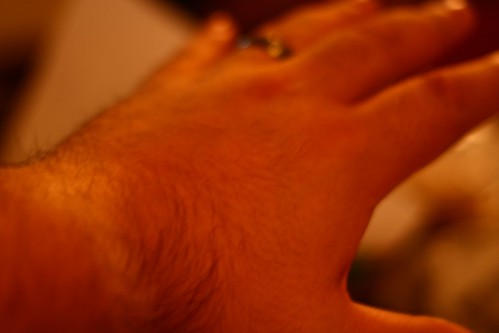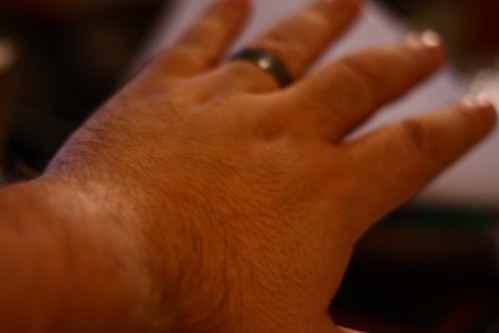First, an apology to anyone who does understand color temperature-I know I'm going to make some technical mistakes, and will vastly over simplfy this, but this is more about color temperature and it's practical appilcations for film/video/photography than a technical dissertation. If you do notice anything egregious, do give me a shout. Those caveats aside, here we go:
A good, technical definition is that is that the color temperature of a light source is the temperature of an ideal black-body radiator that radiates light of comparable hue to that of the light source. In essence, color temperature is a scale against which the base color of a light source is measured, scaling from very orangey red, to very blue.
The best analogy that I can offer is to thing about a piece of metal being heated. As it begins getting heated, it is orange. The hotter it gets, the more it transition to blue as it gets superheated.
Here is a great chart that will show you the scale (from Frost Electric ):
This works much better as a practical experiment. Go outside on an overcast day and look at how blue a piece of white paper really is. Then go inside and under an incandescent light. Take a look at how much warmer it looks.
This comes to a huge video and photography crux because this is the principle behind white balancing. Lots of folks feel happy with their cameras Auto White Balance (AWB), but with some minor tweaking you can make better choices....or more fun choices
At a very basic level, white balancing removes or minimizes a particular spectrum of color in order to give you a "true white". Let's just take two typical white balances: 3200k (Tungsten) and 5600K (Daylight).
3200k will remove some of the amber that you see. 5600k will remove some of the blue. What it also does, and can be used to great effect, is to enhance the other.
Imagine someone standing in front of a window, and it's a nice, mellow overcast day. Outside will be around 6000k. Fairly blue. If we light our subject inside with incandescent lights (3200k balance or warmer), and set our white balance to that preset, the subject will look as we expected...but the windows will be very blue. If we switch our white balance preset to 5500k, the subject will be VERY orange (we're subtracting blue from a scene that didn't have much to begin with), but the windows will look as intended. A quick example, for what I think is a fun effect:

Here are 3 pictures-same ISO/Exposure, etc. The only thing that I changed was the white balance preset. It's lit with a fairly warm source-about 2800k-so with the 3200k preset, the skin tones look pleasantly warm. With a 5200k and 7000k preset, the effect of pulling out the blue is exaggerated.

3200k preset, 2900k light source
5200k preset, 2900k light source
7000k preset, 2900k light source
The way we correct or control this is through proper light source selection. It's simply a matter or selecting a daylight balanced tube OR using gel to correct a light source. Any light source can be changed, but, keep in mind, if you do this with gels, it's subtractive color mixing...so you will get less output. This is why fluorescents are a great option.
If you have a Kino Flo-or build the DIY fluorescent hot light explained here-, you can simply swap the bulbs from a warm balance (typically 2700k or 3000k), to something cooler (up to 6000k). If you did the same with gel, it would mean having to add blue or CTB (Color Temperature Blue). You can get this in a large batch of gradients, from 1/8 all of the way to Full...but you lose significant out put by the end-as much as 64% if you go to Full CTB! The inverse also exists in case you need to go the other way in the form of CTO (Color Temperature Orange).
One big trick that you can experiment with is to use color temperature to enhance the tones of your picture-particularly in portraits, though it helps a lot in most everything. First either measure (with a color meter) or take a guess at your color temperature and set it in the nearest preset that you have. In the following example, I have some nice, overcast light coming in-I'm guessing around 6000k. Here's my first shot:
It looks nice-the color temperature was close to that 6000k point. BUT....let's say I wanted it took look a tad cozier, a tad warmer...I have two options. If my camera supports me dialing in a specific color temperature, I could simply roll it up to 6500k or 7000k.....or I could add some warmth to the scene. In this case, I brought up my overhead lights just a little, and here is the result:
Maybe overwarm for some, maybe it's just the effect you were looking for. Either way, knowing a bit more about white balance lets us manipulate that and use it as an effect.
A few quick tips before I end this diatribe:
- If you use fluorescents, let them burn in before you shoot. Some take a minute, some take a few, but because you are stimulating the phosphors inside that tube, until they get up to temperature (warmth, not color temperature), they may not be at full brightness or the correct color.
- Physical temperature impacts fluorescents dramatically-it can dim their output significantly and cause color shift.
- When buying fluorescent tubes, look for those with the highest CRI. While CRI is an imperfet system, for our purposes, it allows you to know how faithfully it produces light at the intended color. Read more over at Wikipedia.
- A word about incandescent lights....unlike a fluorescent, which has the same color temperature throughout it's dimming range (if it dims), a incandescent (standard lightbulb) VARIES through it's dimming range. An incandescent at 15% or 20% of it's total output could be as low as 2200k...while not being a full 3200k until it is at it's full intensity.





No comments:
Post a Comment